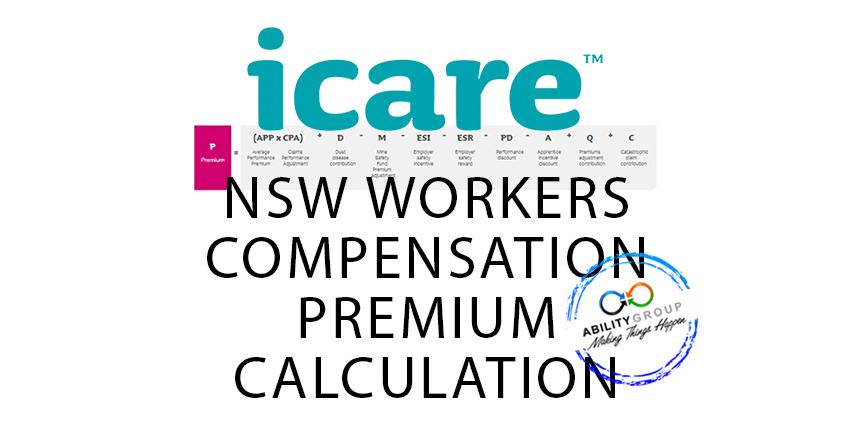Most employers in NSW are aware of their responsibilities & obligations towards their employees to ensure they are covered should they suffer an accident or get injured whilst at work. Perhaps somewhat surprisingly fewer understand how their NSW workers compensation premiums they pay every year are calculated & the key items that influence the final premium payable.
How are workers compensation premiums calculated in NSW?
The premium calculation is based on several components which include:
- The industry/industries, Work Industry Classification (also known as WIC) in which the Insured operates
- An estimation or declared figure for the wages paid to the employees involved in each industry
The base Premium (called APP – Average Performance Premium) calculated by multiplying the wages by the WIC rate
- For any medium (APP between $30K – $500K) or large (APP $500K+) employers where their premiums are referred to as Experience Rated employers (with an APP $30K+) certain claim costs associated with your injured workers over the prior three years will also impact premium calculations
- Other factors such as dust diseases levy and mine safety premium adjustment (for mining industry employers)
- Wages are a key component of determining the final premium and this can be a tricky aspect as many businesses, or their accountants, assume workers compensation wages are the same as company or payroll tax calculations. Deemed wages can be confusing and it is recommended you seek help to ensure you are accurately declaring your wages
- Initial premiums can be reduced by various incentives including;
- Employer Safety Incentive (ESI)
- Employer Safety Reward (ESR)
- Performance Discount (PD)
- Apprentice Incentive Discount (A)

How often are workers compensation premiums calculated?
Workers compensation in business as usual situations are calculated twice during each policy period:
- The initial premium (Renewal premium) – is calculated at the beginning of the policy period, based on an estimation of wages that employers anticipate will be paid during the policy period.
- The final premium (Hindsight Adjustment) – is calculated at the end of the policy period based on the actual figure of wages paid throughout the Policy year.
How can employers reduce their workers compensation Premium?
Any claim costs for medium and large employers will be included in the Premium calculation for a maximum period of three years. Employers can reduce this cost by implementing the below noted strategies:
- having safety practices in place to minimise the risks of accidents/injuries
- supporting Injured workers rehabilitation and RTW providing them with suitable duties and accommodating their needs and restrictions whilst they recover
Given workers compensation can be very volatile, managing your workers compensation premium can be key to a sustain business. Need help with your workers compensation premium? Contact our workers compensation specialists for help!
For further information, please refer:
Source: icare
Title: Premium calculation for experience-rated employers
Read time: 8 mins

